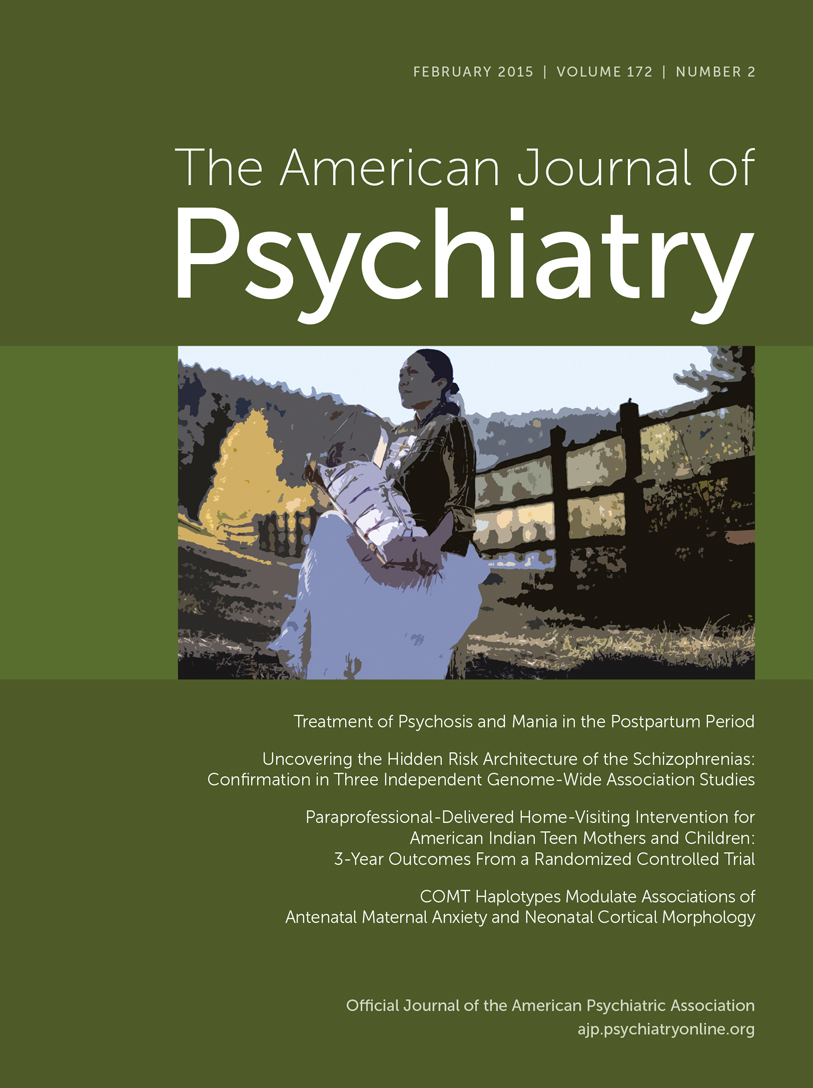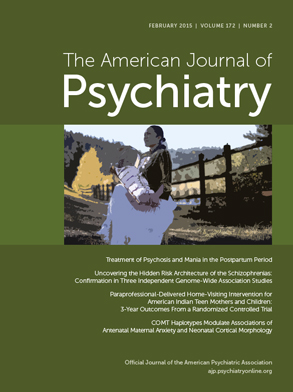Many adverse life outcomes have been shown to have their roots in the earliest years of life. Chronic diseases, including cardiovascular disease, diabetes, depression, and substance abuse, as well as life skills, such as educational and vocational attainment and the ability to form meaningful relationships, are all made more or less likely depending on the quality of in utero and early childhood experiences (
1). Given the enormity of these issues in the lives of individuals as well as the costs to society when they go awry, as they frequently do, it is imperative that their common early life roots be understood and that successful interventions be developed, tested, and widely disseminated with adaptations for populations with different backgrounds and risk factors.
The evidence is now clear that adverse early life exposures increase disease risk, not only through an increase in unhealthy behaviors, but also through mechanisms intimately tied to physiologic regulation and brain development (
2). Landmark research such as the Adverse Childhood Experiences Study and the Dunedin Multidisciplinary Health and Development Study have shown that childhood abuse and neglect are associated with increased risk in adulthood for conditions as diverse as cardiovascular disease, obesity, depression, substance abuse, and smoking (
3,
4). These and other studies have shown that childhood poverty, maternal stress during pregnancy, poor maternal-child attachment, and inadequate access to quality nutrition in the in utero and early childhood periods all convey increased risk for later disease (
1,
5,
6). Scientific advances are elucidating the physiological, developmental, and epigenetic programming of early life experiences and the mechanisms by which they contribute to adult conditions decades later (
6,
7).
Given the strong science linking early life exposures and adverse adult outcomes, attention has been turning to developing and studying interventions that may prevent or at least reduce early life adversities. Because of the long lag time between early life exposures and adverse adult outcomes, it is necessary to look at interventions that were done long enough ago to determine whether a reduction in disease parameters is occurring as well as to look at studies with shorter-term follow-up to see if there are reductions in important risk markers for later disease development. Two randomized controlled intervention studies with long-term participant follow-up are the Nurse-Family Partnership and the Carolina Abecedarian Project, both of which have now followed participants for several decades. The Nurse-Family Partnership, a home-visiting intervention that matches trained nurses with first-time mothers beginning in pregnancy and continuing until the child’s second birthday, has demonstrated significant effects on a number of health, psychosocial, and educational risk factors (
8). The Carolina Abecedarian Project, which provided an intensive early learning program and enhanced nutrition from birth to age 5, has shown significant reductions in cardiovascular disease and metabolic risk markers in participants into their mid-30s (
9). An intervention study with 8-year follow-up involved a 7-week psychosocial intervention provided to rural low-income African American mothers and their 11-year-old children. Compared with control children, the children in the intervention group had significantly lower results for all six inflammatory markers tested when the children reached age 19 (
10).
With evidence such as this, the discussion about early life intervention is starting to evolve from “Does it work?” to “What works and for whom?” To produce the most benefits for the most people, it is crucial to determine what types of interventions work best in different high-risk populations, especially those with unique cultural, linguistic, and historical experiences. It is in this context that the article by Barlow et al. in this issue (
11) makes a major contribution to the science of early life intervention. The Family Spirit home-visiting intervention was developed in partnership with community members from the four southwestern tribal reservation communities where the randomized controlled trial was conducted. As the communities placed a high value on home visitors who spoke their tribal languages and understood the life experiences of their more vulnerable members, the Family Spirit intervention was delivered by paraprofessional home visitors recruited from those communities. High-risk pregnant (N=322) American Indian teens were randomly assigned to the Family Spirit home-visiting intervention plus optimized standard care (transportation to prenatal and well-baby visits, pamphlets on child care and community resources, and referrals when needed) or to optimized standard care alone. The intervention consisted of home visits beginning in pregnancy and continuing through 36 months postpartum with delivery of a standardized curriculum focusing on parenting skills, maternal drug abuse prevention, maternal life skills, and positive psychosocial development. Child outcomes at age 3 years showed significant reductions in internalizing, externalizing, and dysregulation problems. As discussed in the article, these types of behaviors are risk factors for later substance use and obesity—two of the most pressing health issues in indigenous communities (
12).
The evidence for early life intervention is so convincing that government and private organizations are now committing funds and promoting evidence-based programs. The Affordable Care Act authorized $1.5 billion over 5 years for the Maternal, Infant, and Early Childhood Home Visiting Program. Funding for the program primarily went to states for provision of evidence-based home-visiting programs with 3% set aside for tribal organizations (
13). The Indian Health Service is the federal agency responsible for providing health services to American Indian and Alaska Native people. It is increasing its early life intervention programs, implementing Family Spirit with American Indian and Alaska Native community health workers as home visitors, getting all of its obstetric hospitals certified through the Baby-Friendly Hospital Initiative, and promoting improved nutrition through the First Lady’s
Let’s Move! in Indian Country program. Nongovernmental organizations, including the Robert Wood Johnson Foundation (
14) and the American Academy of Pediatrics (
15), have announced major initiatives related to early life risk and intervention.
While much is yet to be learned, there are some common themes emerging in research on in utero and early childhood interventions: access to sufficient quality and quantity of nutritious foods, amelioration of the effects of poverty and stress, the importance for children of nurturing relationships with parents and other caregivers, healthy development and learning, safe neighborhoods, and intensive early life programs tailored to and in partnership with the communities where they are implemented (
1,
5,
11,
16). Estimates of the economic impact of early life interventions over the lifespan show excellent returns on investment (
17). However, as those cost savings are spread across different parts of municipal budgets, it will require long-term vision to shift resources to programs for pregnant women and young children.
The further into the lifespan we wait to intervene, the lower the magnitude of success that can be attained across the multiple domains of health, cognition, and life skills—and at much higher costs (
18). It is time to simultaneously ramp up both implementation and evaluation of early life interventions (
19). Learning from important work such as Family Spirit will enable society to get to the roots of many problems across the lifespan, reduce disparities, and realize the potential of future generations.

